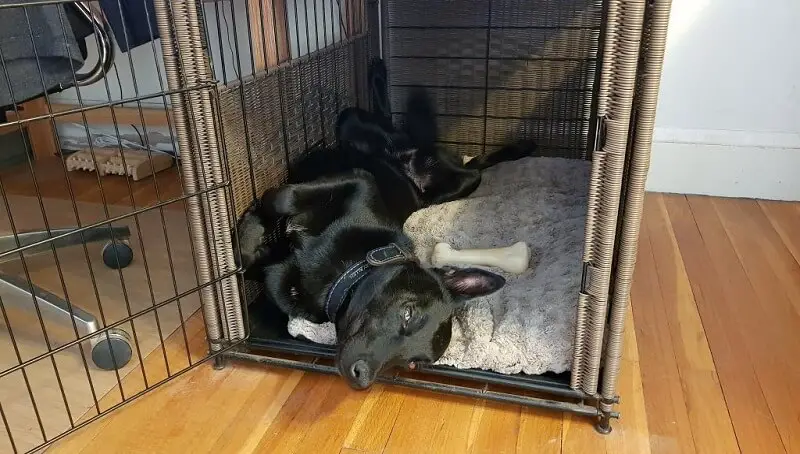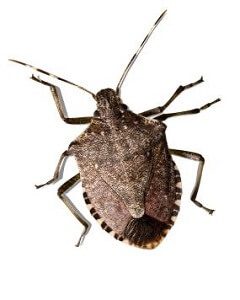
Finding the Quick on Black Dog Nails
October 5, 2022
How Long Should a Puppy Be in a Crate?
October 6, 2022
As you surely know, dogs always try to eat the most surprising things. It’s no wonder that stink bugs will also end up in a dog’s mouth at one point or another. As soon as it gets hotter outside, your yard will get full of life, which of course, will include a ton of bugs. When these small creatures move, they can trigger predatory instincts in your dog. Give this article a read if you want to find out what happens when your dog eats a stink bug and what you can do about this.
Most of the time, your dog won’t eat a stick bug on purpose because it smells really bad. It doesn’t even need more than the awful smell to completely repel your dog. If your pet can go past the weird smell, this bug also comes with some nasty secretions that contain ‘Aldehydes’, which are known to have a very bitter taste. When your dog eats a stink bug, due to the awful taste, it might start to drool and even vomit at some point. The good news is that vomiting is basically the worst that can happen when your dog eats a stink bug.
Why Would a Dog Eat Stink Bugs?
Dogs will basically try to eat anything small that is walking, flying, or crawling, including crickets, flies, grasshoppers, and termites. They like to eat them, but also to chase and catch them. But can dogs actually digest insects? Yes, they can, and stink bugs are no exception. There is nothing toxic in these insects for the body of the dog and no long-term effects will be visible on the dog’s health after eating them. This means that aside from the repulsing taste, nothing bad will happen to your dog after eating a stink bug.
Mid-Atlantic Veterinary Hospital states that stink bugs don’t have any actual poison in them but even without being poisonous, they can still end up irritating the gastrointestinal tract of pets due to their very smelly secretions. This irritation will most likely cause symptoms like drooling, sometimes even in excess and even vomiting in extreme cases. The irritation from stink bug secretions can cause issues in the pet’s cheeks as well, but also in its lips, gums, and tongue.
You might also like my articles about:
Possible Effects in Dogs After Eating Stink Bugs
You might think that dogs have a nose so powerful, that they would never eat these kinds of bugs. This isn’t actually the case. In fact, dogs see these bugs as toys and run after them, then trap them, and then take a bite out of them as a reward for their efforts. A bite is all the dog needs to notice the disgusting smell and taste of the bug, which will make the animal spit it out on the spot. Even though the bug doesn’t spend a lot of time in the dog’s mouth, there are still some consequences that might affect the dog.
- The bug can still become toxic if it is affected by pesticides when the dog ingests it.
- Considering that the secretions of the bug will also affect the tongue and the gums, the pet will also start to drool excessively.
- These same secretions can also irritate the dog’s eyes, creating a stinging sensation.
- When the dog bites the insect, it will cause all sorts of problems in the digestive system of the pet, which might ultimately cause it to vomit. This vomiting can end in about 8 to 12 hours.
Keep in mind that you can always call the pet poison control line at (888) 426-4435 when a pet of yours ingests a bug.
What About Pups That Eat Cockroaches?
Cockroaches are known to often have Physaloptera spp. inside their stomachs. These are basically worms that use the roach as a host for the larvae. If your dog will eat a cockroach that is infested with these parasites, their larvae will go into the system of the pet and transform into adult worms. This infestation of the gastrointestinal tract is known as Physalopterosis and it is a pretty nasty medical issue. It will feature symptoms like:
- Sleepiness
- Diarrhea
- Dark feces
- Anorexia
- Worms appearing in vomit
- Persistent or periodic throwing up
- Regurgitation
Treatment of Physalopterosis in Dogs
 The dog will receive treatment in three phases with Anthelmintics, which are given orally once every 2 weeks. A medication that is known to show exceptional results and an effectiveness level of over 80% is also Pyrantel. In some extreme cases, where the Physalopterosis is in its final stages, your dog might also need gastroprotection.
The dog will receive treatment in three phases with Anthelmintics, which are given orally once every 2 weeks. A medication that is known to show exceptional results and an effectiveness level of over 80% is also Pyrantel. In some extreme cases, where the Physalopterosis is in its final stages, your dog might also need gastroprotection.
When the treatment is working, you should start to notice a stop in the shedding of worms in the feces or vomit of the pet.
Even after the dog seems to feel better and no signs of the disease can be seen, the treatment should continue until your vet tells you to stop. You might also be required to take an additional fecal test to check for any left larvae. The treatment is continued if larvae can still be found during this test.
Your vet will also have to check your pet to see if its health has improved. This analysis should also consider whether the dog’s cravings have come back to normal and whether the pet has gained back the lost weight. As long as all these examinations come with positive results, the pet is considered to have overcome the infection.
What About Dogs That Eat Crickets?
Crickets are very tempting for playful dogs, especially considering that they are always hopping around. These bugs are also pretty crunchy, which makes them even more enjoyable by dogs. Crickets are not toxic to dogs, just like stink bugs. And in fact, they are a great source of fats, proteins, and other nutrients.
The only problem is the same Physaloptera spp., which is also common in these bugs. What you should know is that not every vomiting is a sign that the dog has these worms. A lot of dogs will vomit after eating crickets because they don’t like the texture of the bugs.
Conclusion
Although there isn’t always a problem when a dog will eat a bug, it’s always a good idea to watch out for any symptoms that might point to a severe medical issue. One example is stomach worms which can become a serious issue when left untreated for too long.
